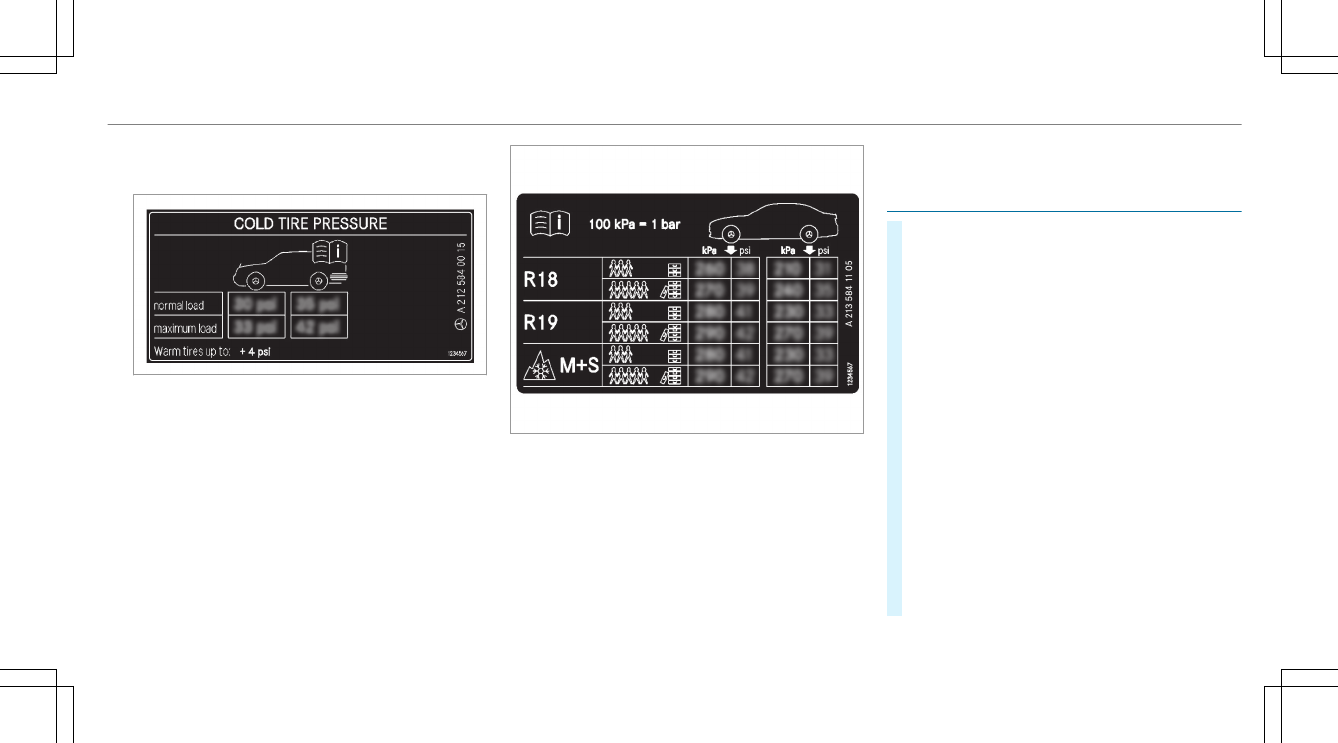%
The data shown in the images is example
data.
The tire pressure table shows the recommended
tire pressures for all tires approved for this vehi‐
cle. The recommended tire pressures apply for
cold tires under various operating conditions, i.e.
loading and/or speed of the vehicle.
If one or more tire sizes precede a tire pressure,
the tire pressure information following is only
valid for those tire sizes.
The load conditions "partially laden" and "fully
laden" are defined in the table for different num‐
bers of passengers and amounts of luggage. The
actual number of seats may differ from this.
Some tire pressure tables only show the rim
diameter instead of the complete tire size, e.g.
R18. The rim diameter is part of the tire size and
can be found on the tire side wall (/ page 529).
Be sure to also observe the following further
related subjects:
R
Notes on tire pressure (/ page 515)
R
Tire and Loading Information placard
(/ page 522)
R
Maximum tire pressure (/ page 528)
Checking tire pressures manually
#
Read the tire pressure for the current operat‐
ing conditions from the Tire and Loading
Information placard or the tire pressure
table. Observe the notes on tire pressure.
#
Remove the valve cap of the tire to be
checked.
#
Press the tire pressure gauge securely onto
the valve.
#
Read the tire pressure.
#
If the tire pressure is lower than the recom‐
mended value, increase the tire pressure to
the recommended value.
#
If the tire pressure is higher than the recom‐
mended value, release air. To do so, press
down the metal pin in the valve, e.g. using
the tip of a pen for example. Then check the
tire pressure again using the tire pressure
gauge.
#
Screw the valve cap onto the valve.
Wheels and tires
517

